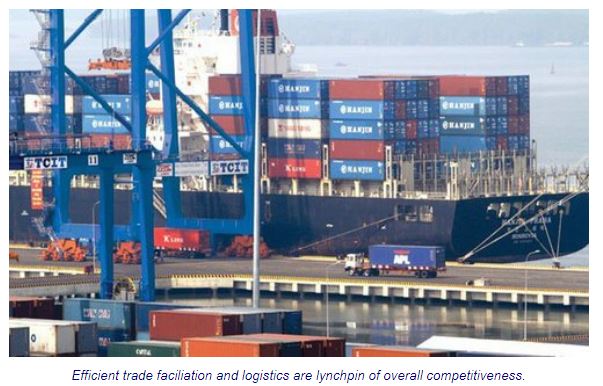Competitiveness key for Vietnam’s sustainable development: World Bank
Vietnam reached the highest trade-to-GDP ratio in the developing world at 190% in 2017, well above what is predicted for its income level, according to the report.
The country’s exports have consistently outperformed world export growth over the past decade. However, where connected to global supply chains, Vietnam often contributes the lower-value-added inputs and limited technology embedded in production.
Trade facilitation, thus is considered critical to improving competitiveness. Its goal is to make supply chains more efficient and to reduce costs, red tape and bottlenecks faced by the traders.
Trade costs, a critical indicator of competitiveness, are broadly defined to include policy barriers costs and logistics costs. While Vietnam has made great progress in reducing tariffs, there remains significant potential to reduce trade cost through rationalization of non-tariff measures or specialized controls, more efficient border management and logistics.
Global trends show that gains from improving trade facilitation now outweigh gains from reducing tariffs. According to the World Economic Forum, if all countries reduced supply chain barriers halfway to that of Singapore, global GDP could increase by 4.7% or US$2.6 trillion, and world trade by 14.5% or US$1.6 trillion, far outweighing the benefits from the elimination of all import tariffs. Other research has shown that better logistics performance is associated higher GDP growth and trade growth.
Consequently, integrating into global value chains can assist the move toward more sophisticated products.
Over the past decade, Vietnam has steadily improved its score in the World Bank’s Logistics Performance Index, and it outperforms both its region and income group. However, with a score of 2.98 out of a maximum of 5.0 in 2016, Vietnam still has potential to improve its performance.
Vietnam has also focused on progressive improvement of the business environment and competitiveness to reach the level of ASEAN-4 (including Singapore, Malaysia, Thailand, and the Philippines) by 2020.
Recommendations to move forward
Reducing costs of border compliance and specialized controls as well as logistics costs can be achieved by a comprehensive program comprising the following four pillars:
Pillar 1: Strengthening trade facilitation through the reduction of non-tariff costs – time to comply with specialized control measures and procedures before and at the border – accounted for 72% of the total import time and is responsible by customs and specialized control agencies.
Pillar 2: Trade-related infrastructure and the quality of connectivity. Vietnam’s growth potential is being constrained by the lack of adequate high-quality multimodal transport network connecting major growth poles to main international gateways, and poor quality of transport and logistics services.
Pillar 3: Building a competitive logistics service sector. Vietnam’s logistics service providers often lack the scale, skills and technology to provide reliable and efficient services. There is also a lack of reliable logistics statistical data to support state management agencies and the private sector to formulate appropriate policies and corporate strategies for the sector development.
Pillar 4: Strengthening interagency coordination and partnership with the private sector. The recent establishment of Trade Facilitation and National Single Window Committee is critical to lead inter-agency efforts to improve trade facilitation and to comply with the WTO’s Trade Facilitation Agreement.
With regard to Vietnam’s logistics sector, Pham Minh Duc, senior economist of the World Bank recommended on a comprehensive development of multi-modal transport, instead of focusing on a specific transport modal.
Nevertheless, the strategy should be based on Vietnam’s comparative advantages, Duc stressed at the launch of Taking Stock on June 14.
In addition to other transport modals, Vietnam’s inland waterways remain hugely untapped potential for development, said Ousmane Dione, the World Bank Country Director for Vietnam. In recent years, the World Bank has provided funds worth over US$800 million in Vietnam’s inland waterways, which is considered a small fraction as compared with the amount needed to realize the sector’s full potential.
As Vietnam is stepping up efforts to tackle climate change, exploring investment opportunities in inland waterways and improving multi-modal transport performance are viable options, he added.
Countries with better logistics performance have been estimated to have 1 percentage point higher GDP growth and 2 percentage points higher trade growth than countries with similar per capita incomes. Exporters with shipping costs 1 percentage point lower than their competitors may enjoy a 5% to 8% higher market share. Meanwhile, every day of delay increases production costs by 1%.


 English
English




